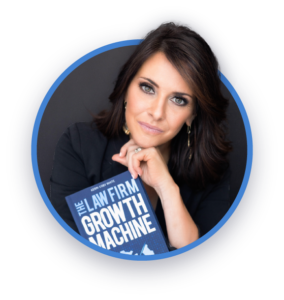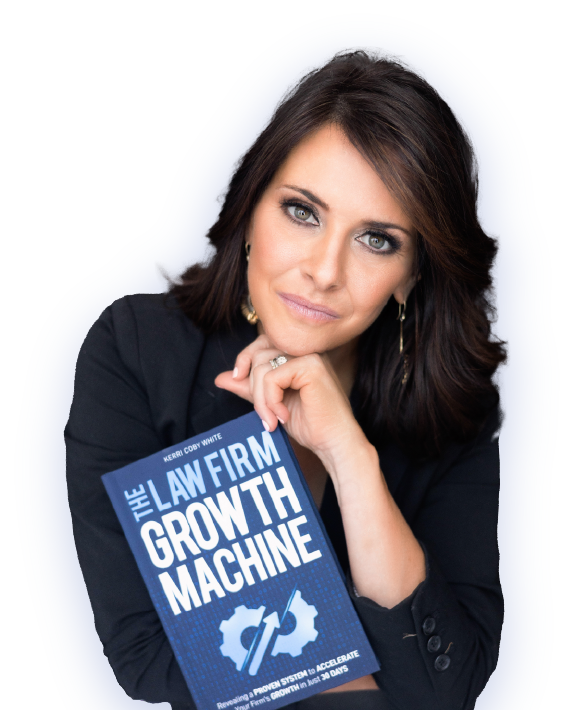Turn Your Process Into a Powerhouse
Ever feel like your intake process is more of a bottleneck than a gateway? Trust me, you’re not alone. I remember when I first started working with firms on intake optimization. I’d sit in on calls or observe workflows, and it was clear that even the most talented attorneys were being held back by clunky, outdated, or inconsistent intake systems. The legal side of the house was ready to roll, but the front door wasn’t open wide enough to let clients through smoothly.
And here’s the truth: if your intake system is slow, inconsistent, or error-prone, you’re not just wasting time, you’re leaving money on the table. Every missed call, delayed follow-up, or incomplete intake is a potential lost case. Every client who walks away because the process felt confusing or impersonal is a missed opportunity to build trust and grow your practice.
In today’s competitive landscape, intake optimization for law firms isn’t optional. It’s essential.
But the good news? You can fix this. You can turn intake from a liability into a strategic asset. With the right workflow design, business intelligence, and team training, your intake process can become a true gateway, one that attracts, engages, and seamlessly converts qualified leads into loyal clients.
Understanding the Intake Workflow
Before we dive into solutions, let’s take a step back and get clear on the foundation.
Your intake workflow is the system your firm uses to handle potential clients from the very first moment of contact through to a signed retainer. It’s the first impression your firm makes, and in many cases, it determines whether or not that prospect becomes a paying client.
Let’s break it down into four key stages:
Initial Contact
This is the moment your firm first hears from a potential client or reaches out to them. It could come through a phone call, web form, online chat, or even a referral. However it happens, it’s the digital (or literal) knock on your door. And here’s the catch: if no one answers or if the response is slow or impersonal, the prospect may never try again.
Information Gathering
Once the contact is made, the real work begins. This is where you start to learn about the client and their legal issue. Questions are asked, details collected, and a clearer picture begins to form of what they need and how your firm might help. But here’s where a lot of firms stumble: inconsistent questioning, missing data, or unclear documentation can lead to confusion down the road, and that confusion can cost you cases.
Qualification
Now it’s time to evaluate whether this prospect is a good fit for your firm. Do they have a case you can take? Do they meet your criteria? Can you deliver the results they’re looking for? This is where innovative intake systems shine, helping your team identify qualified leads quickly and avoid wasting time on prospects who aren’t a match.
Follow-Up and Conversion
Finally, it’s about moving that qualified lead toward a signed retainer. This could involve multiple follow-up calls, emails, texts, and answering questions or handling objections. Done well, it builds trust and reinforces the client’s decision to hire your firm. Done poorly, it leads to ghosted calls, missed opportunities, and another lead lost to a competitor.
Sound familiar? Maybe a little too familiar, especially if your team is feeling the pressure.
I’ve worked with firms where the legal team is ready to go, talented, prepared, and eager to serve, but the front door is barely cracked open. Leads come in, but they aren’t answered quickly. Follow-ups are delayed. Notes get lost. And qualified prospects? They slip through the cracks before anyone even realizes they were there.
That’s why intake optimization isn’t just a nice-to-have, it’s the linchpin of your entire client acquisition strategy. When each step in this workflow is clearly defined, consistently executed, and fully supported by systems and training, your firm doesn’t just handle leads, you convert them into clients confidently and efficiently.
Why Intake Optimization Matters More Than Ever
Here’s the thing: no matter how skilled your attorneys are, if your intake system is clunky, inconsistent, or slow, you’re sabotaging your growth. I’ve seen brilliant firms lose business because prospects never made it past the front door.
An optimized legal intake solution solves that, and the results are game-changing:
Improves Client Satisfaction
Clients expect fast, clear, and professional responses. When your team engages with empathy and precision, trust builds quickly, and trust drives retention and referrals.
Boosts Conversion Rates
Firms with streamlined intake processes see up to 30% more conversions. Why? Because leads don’t have time to wait. The faster and smoother the process, the more likely they are to sign.
Enhances Team Productivity
When intake is consistent and structured, your team isn’t scrambling. They’re executing. That means fewer errors, better communication, and more time focused on client care.
Reduces Client Acquisition Costs
If you’re investing in SEO, ads, or referrals but losing leads at intake? You’re bleeding money. Tighten up the workflow, and your client acquisition costs drop dramatically.
For more insights on strengthening your systems, check out Professional Law Firm Intake Services and Legal Intake Optimization Strategies, where we break down proven methods to streamline intake and boost client conversion.
The 4 Key Components of an Efficient Legal Intake Solution
Let’s break this down into the parts that matter most when you’re serious about optimizing intake. Each of these components plays a critical role in ensuring your firm isn’t just responsive but strategic at every step of the intake journey.
Initial Contact: Speed Wins
When a prospective client reaches out, the clock starts ticking. Your response time can be the difference between earning their trust and losing them to another firm.
According to a study by Lead Response Management, you are 100 times more likely to connect with a lead if you respond within the first five minutes compared to waiting just 30 minutes. That’s not a slight edge, it’s a game-changer.
So how do you consistently respond that quickly?
Tactics to implement:
- Train your intake team to treat every new inquiry like gold. Speed and professionalism should be non-negotiable.
- Utilize automated tools such as chatbots, email autoresponders, or text confirmations to ensure after-hours coverage. Prospects need acknowledgement, even if it’s not from a live person.
- Always confirm receipt. A simple, “Thanks for reaching out, we received your message and will be in touch shortly,” can make a client feel seen and start the trust-building process.
Information Gathering: Consistency is King
This is where many firms unknowingly start to leak value. If your team is asking different questions every time or missing essential details, it creates confusion not just for you, but for the client too.
That’s why a strong legal intake solution begins with standardization. You’re not turning your team into robots. You’re giving them tools that create efficiency and predictability.
How to get this right:
- Develop detailed intake forms that capture all essential data: contact information, case details, referral sources, and any key qualifiers your attorneys need.
- Create clear intake scripts for calls and chats. These aren’t word-for-word mandates. Think of them as conversation blueprints designed to make sure nothing important gets missed.
- Pro Tip: Use CRM integration to automate data flow. When your forms sync with tools like Clio Grow, Lawmatics, or HubSpot, you reduce manual entry, prevent data loss, and keep everything centralized for your legal team.
Qualification: Smart Filtering
Here’s a truth bomb: just because someone contacts your firm doesn’t mean they should become a client. Without clear qualification steps, your team might spend hours nurturing leads that were never a fit to begin with.
Effective intake optimization means setting boundaries. When your team knows exactly who your ideal client is, they can spend more time on the right prospects and less time spinning their wheels.
Strategies to implement:
- Define qualification criteria. Use clear guidelines around case type, geography, financial viability, or legal urgency.
- Provide decision trees or checklists. Equip your team with tools that help them assess fit consistently and confidently.
- Encourage clarity, not rejection. This is about aligning with prospects who need your services, rather than arbitrarily turning people away.
Follow-Up and Conversion: Stay in Touch
This is where so many leads quietly die. A prospect reaches out, gets some information, and… crickets. No reminders, follow-ups. No conversion.
In reality, most leads need multiple touches before they commit. Studies show that 5 to 7 follow-ups are often required before a lead is ready to hire. If you don’t have a system for this, you’re letting potential cases slip through the cracks.
Your playbook should include:
- Scheduled callbacks and calendar holds. Don’t just say “we’ll follow up.” Set it in stone.
- Automated email and text sequences. Keep leads warm with reminders, case-related content, or appointment confirmations.
- CRM lead tracking. Use your system to document every interaction, set next steps, and trigger reminders so nothing gets missed.
How to Build Your Intake Optimization Blueprint
Ready to overhaul your intake system and turn it into a strategic asset? Here’s the six-step blueprint I use when helping firms design a more efficient, client-centric intake process.
Step 1: Map Your Current Process
Before you can improve anything, you need to see how it works today, not just how you think it works.
Pull your intake team together, from the receptionist to the paralegal to the lead intake specialist. Grab a whiteboard, a notebook, or a digital workflow tool and start mapping every step of the client journey from first contact to signed retainer.
Ask questions like:
- Where do leads fall through the cracks?
- Where do handoffs happen, and are they smooth or clunky?
- Are there unnecessary steps, redundancies, or delays?
- Are we asking for the same information multiple times?
This exercise will give you clarity on bottlenecks and blind spots. Once you clearly see the inefficiencies, you can start fixing them.
Step 2: Define Clear Roles
Who is responsible for what?
Too many firms operate in the gray zone. Intake tasks are shared without structure, and when something gets missed, it turns into a blame game.
Get specific:
- Who answers the phones?
- Who handles web inquiries?
- Who qualifies the leads?
- Who follows up, and how often?
When roles and responsibilities are clearly defined, accountability becomes easier and your system runs more smoothly.
Step 3: Standardize Scripts and Templates
Consistency is not the enemy of personalization, it’s the foundation of professionalism.
When your intake team has access to well-written scripts, email templates, and checklists, they are equipped to deliver the same high-quality experience to every lead. No matter who answers the phone or handles the chat, your client experience stays consistent.
Create resources such as:
- Call scripts that outline key questions and transitions
- Email and text templates for common responses and follow-ups
- Intake checklists that capture all required client information
And remember, leave room for the human element. A good script supports the conversation. It doesn’t stifle it.
Step 4: Integrate the Right Technology
If you want to optimize your intake truly, you need tools that do more than just “get the job done.” You need a legal intake solution that works with your team, not against them.
Build your tech stack with:
- CRM systems to manage contacts, track communication, and document every lead interaction
- Automation tools to handle appointment scheduling, email sequences, and intake form delivery
- Dashboards and reporting tools to track your performance metrics in real time
When your tools integrate smoothly, your team becomes more efficient and your data becomes more actionable.
Step 5: Train and Reinforce
Designing a great workflow is only half the battle. The other half is ensuring your team follows it.
Implement a culture of training:
- Host regular training sessions to review scripts, tools, and performance.
- Practice objection handling and sales language through role-plays.
- Provide ongoing feedback to identify strengths and address weak spots.
One of my early mentors told me that a well-run firm should convert 92 percent of qualified leads. That number is achievable but only if your team is consistently sharp, aligned, and well-supported.
Step 6: Monitor KPIs and Iterate
This is where the real magic happens. Once your system is in place, you need to measure its performance and refine it continuously.
Track these key performance indicators:
- Conversion rate: What percentage of leads become clients?
- Win rate: Of those qualified, how many cases are signed?
- Average response time: How fast is your team following up?
- Lead source performance: Which marketing channels bring in your best cases?
- Drop-off points: At what stage are you losing leads?
Review this data monthly or quarterly. Use it to identify areas that need attention, uncover opportunities for improvement, and celebrate the wins.
Conclusion: Don’t Let Intake Be Your Weakest Link
Here’s the bottom line:
Intake optimization for law firms isn’t just about fixing what’s broken; it’s about building something better. Smarter. Stronger.
By:
- Mapping your current workflow
- Defining clear roles
- Standardizing tools
- Leveraging technology
- Training with intention
- Monitoring the right KPIs
You turn intake from a bottleneck into a growth engine.
Let’s make your front door as strong as the legal team behind it.
Ready to take the next step? Visit KerriJames.co to explore how we can help you implement the right legal intake solution and unlock your firm’s full potential.










